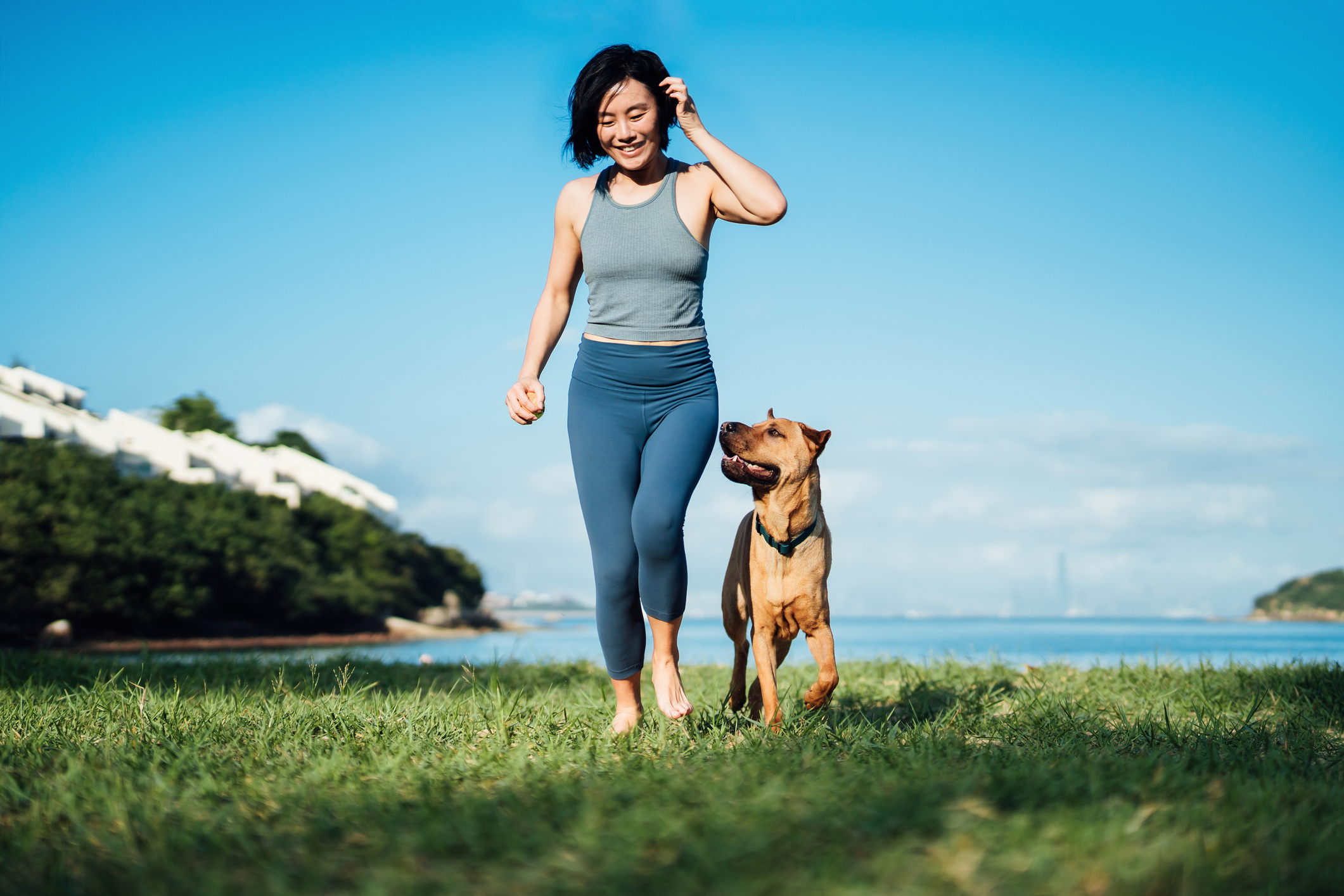How to exercise with your dog, by expert trainer Ben Randall
The new year often brings with it a new focus on health and keeping active. Ben Randall explains how you can help make your dog a part of your fitness regime.


This week's question isn't one question from a single reader — not because nobody has been asking it via paws-for-thought@futurenet.com, but simply because so many of you have been wondering about this topic. We all know that we need to walk our dogs to keep them healthy, but is it okay to take them out running? Or how about cycling?
It's something I'm always asked (and particularly at this time of year) by the owners who come to me for BG (Beggarbush) training or to leave their pooches at our luxury boarding kennels.
So if you're wondering about starting the new year with a healthy walking/running/cycling lifestyle, here's how to incorporate your dog into it.
Before we start though, if your dog is a puppy under 12 months, I wouldn’t suggest any long treks. The most important thing is that your puppy needs to grow and develop its bones. Vets and animal charities tend to suggest five minutes exercise once or twice a day per month of a dog's age — so, for example, two 10-minute walks a day when they're two months old, building slowly up to one or two 60-minute walks a day by the time they have their first birthday. Even that varies, though, both by breed and individual: the Kennel Club website has a breed-by-breed guide on exercise levels for various types of dog.
All that said, once your dog is old enough, bringing him or her with you while you exercise can be brilliant for both of you.
Getting your training right before you start
Your dog might be old enough to start long walks or runs, but — and this is crucial — he or she needs to be walking to heel reliably before you begin. Going for exercise of any serious duration with a dog pulling on the lead can be really bad for your pet's back — not to mention the damage it could do to your shoulder as you attempt to hang on! My advice on how to do that will get you in the right place to start.
On a similar note, if you're on pavements rather than trails your dog will need to be happy walking to heel on the correct side of you to make sure they're further away from the traffic speeding past.
Exquisite houses, the beauty of Nature, and how to get the most from your life, straight to your inbox.
How far can you go when you take your dog powerwalking?
Once you're happy that your dog is both old enough and obedient enough to exercise with you, don't be tempted to run before you can walk. It's a good idea to start off powerwalking: this is the easiest exercise you'll ever do with a dog, and a good, structured power walk as part of your daily routine will be a great way for you both to start the new year’s exercise programme off. A good, brisk half-hour powerwalk twice a day is a good starting point.

How to start taking your dog running with you
Powerwalking is great, but won't be enough if you are a runner. Start small: do 2-5km with your dog a few times a week and see how he or she gets on.
Your mileage will vary — literally — since some dogs will naturally want to go further, just as some runners can do more. But this is a new routine so let's keep things achievable, not least because there are a few things you'll need to get used to.
I find that having a dog walking to heel perfectly can be a hazard when running, at least until they've got used to it. The pooch can get under your feet and cause you to trip over; trust me on this, because it comes from personal experience! In my case, it was because my dog was actually sticking too close to me, keeping too engaged — walking to heel almost too well, in other words.
The solution is to take it slowly and keep at it. My dog learned to stay a slight distance away from my left leg, on a loose lead, and learned the running routine, just as she learned walking heelwork in the first place. Once you've cracked it you can start pushing the boundaries of speed and time.
Try CaniCross if you're going on a long run with your dog — or taking your dog cycling
Something I see lots of these days is CaniCross, which involves a dog wearing a harness attached to a lead made of bungy cord that's tied around the runner’s waist. Once you're tethered like this you can go running across all sorts of places: woodlands, moorlands, mountain trails – challenging terrain for you both.
If you prefer cycling, you can instead get a different attachment which goes on your mountain bike. CaniCross even do a scooter version of this, but bear in mind the idea isn't for your dog to do all the work by pulling you along — your exercise is important too.
People who get in to this often absolutely love it. Some clients and friends of mine regularly run 10-20km doing this, a couple of times a week — and one even takes her spaniels out for 20km or 30km at a time. Working dogs like springer spaniels, collies and cocker spaniels are all likely to be quite happy with this level of exercise.
There are a couple of things to be wary of if you're trying this out. Your dog's recall and heel training needs to be absolutely spot on, the relationship between you completely respectful; I don't need to tell you what would happen if, for example, you were running through some woods and your pet bolted after a deer or a rabbit while you were tethered to them.
Secondly, if they're putting in serious exercise like this, remember to keep your dog properly fed. You don't want them overly fatigued or losing their condition.
Finally, you'll need to work on teaching the dog that a running harness and a lead are two different things which require different behaviour. Your dog should learn quickly that the lead still means a walk, while the harness and the bungy attachment tell the dog it’s running time. But dogs are great at routines and will soon get used to the two disciplines — and what's more, they'll grow to love both.
For more detailed advice about Ben Randall’s positive, reward-based and proven BG training methods, one-to-one training sessions, residential training or five-star dog-boarding at his BGHQ in Herefordshire, telephone 01531 670960 or visit www.ledburylodgekennels.co.uk. For a free seven-day trial of the Gundog app, which costs £24.99 a month or £249.99 a year, visit www.gundog.app/trial
